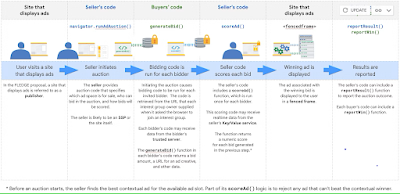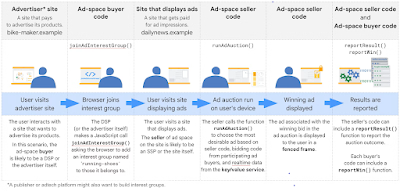Google provides updates on future FLEDGE features and services in its safe sandbox guidelines, providing additional guidance on PPC and SEO. With the end of use of third-party cookies in Chrome, Google has provided many well-received updates to help allay marketers’ concerns.
Google’s response to user privacy is to create a secure sandbox. Safe Sandbox has a number of guidelines to meet the needs of consumers and advertisers.
One of the safest sandbox products is FLEDGE, first introduced in January 2021.
After two years, Google has provided important information about the state of the FLEDGE search engine’s bidding capabilities.
What is FLEG? In 2023, it will be important for marketers (among other security services) to understand what FLEDGE is. Take a quick look at some basics below.
What Is FLEDGE?
FLEDGE is Google’s Privacy Sandbox proposal for serving remarketing use cases and custom audiences when browsers block third-party tracking on websites and apps.
FLAGE stands for:
first
1. on the place
2. saturated
3. decide
4. groups
5. experience
For those unfamiliar, here is a brief overview of how FLEDGE works.
 |
| Chrome FLEDGE update Image credit: developer.chrome.com |
The FLEDGE makes use of interest groups to show users relevant advertisements.
Each component of FLEDGE has an owner, such as an advertiser, publisher, or advertising technology. Different owners create different use cases for ad buy auctions. Buyers can be advertisers, demand platforms (DSPs), or interest group owners who own multiple interest groups.
Below is the FLEDGE advertising and buying auction system.
The Privacy Proposition was created to find a solution for web browsers to store information that is of interest to users rather than advertisers or advertising platforms. Learn more about FLEDGE and how it works here.
 |
| Chrome FLEDGE update Image credit: developer.chrome.com |
LATEST FLEDGE UPDATES
In a recent update, Google provided a timeline for testing specific FLEDGE features and availability.
Auction winning bid reports at the event level. Testing is available now and supported through at least 2026. It may be designed to ease the transition to FLEDGE reporting. It uses
Trusted Execution Environment (TEE) for key-value services. This is currently available for testing and will be required as early as Q3 2025.
frame closes. Available for testing now, not required before 2026.
K – Anonymous. The “50 users to create in 7 days” threshold must be reached. This feature can be tested by the end of Q3 2023.
This feature has improved the integration of FLEDGE+ attribute reports. This can be tested in Q2 2023 and is still in development.
Auction and bidding services. The exam is scheduled for the second half of 2023 and is still in development. Here, users can test and take part in the FLEDGE API. All advertisers may not be eligible for the testing at a time of publication.
Advertisers praise the upcoming FLEDGE feature.
Updates like continued support for event-level bid reporting are great for advertisers. It was originally just a temporary fix, but now it’s been supported for at least three years.
Navah Hopkins, Evangelist at Optmyzr, expresses his excitement for the upcoming FLEDGE updates:
One of the reasons I’m excited about FLEDGE is the transparency of logic and workflow for advertisers and publishers.
The main obstacles for other security sandboxes are confusion in the tagging process, as well as the limited categorization of topics.
The fact that advertisers and publishers can communicate with informed interest groups through on-device signals means that notification mapping will be clearer and easier to track.
Navah then commented on the difference in transition between PPC and SEO:
On the PPC side, we should expect a fairly smooth transition and potential new advertisers to join. On the SEO side, I see more friction in monetization conversations as publishers balance inventory and SEO impact.
Its biggest advantage for the FLEDGE is what real-time bidding and tagging will look like, so testing is easier to control.
Ultimately, this is an exciting time for first-party audiences, and brands should start building their constituencies to match their buyer persona.
Summary
Ever since Google announced it was pushing back the removal of third-party cookies until 2024, marketers have raised a lot of questions about what’s next.
FLEDGE’s new features, service announcements, and suggested schedules provide marketers with more action-oriented and transparent elements to prepare for a cookie-free world. Stay tuned for the latest announcements from our security testing environment here.




